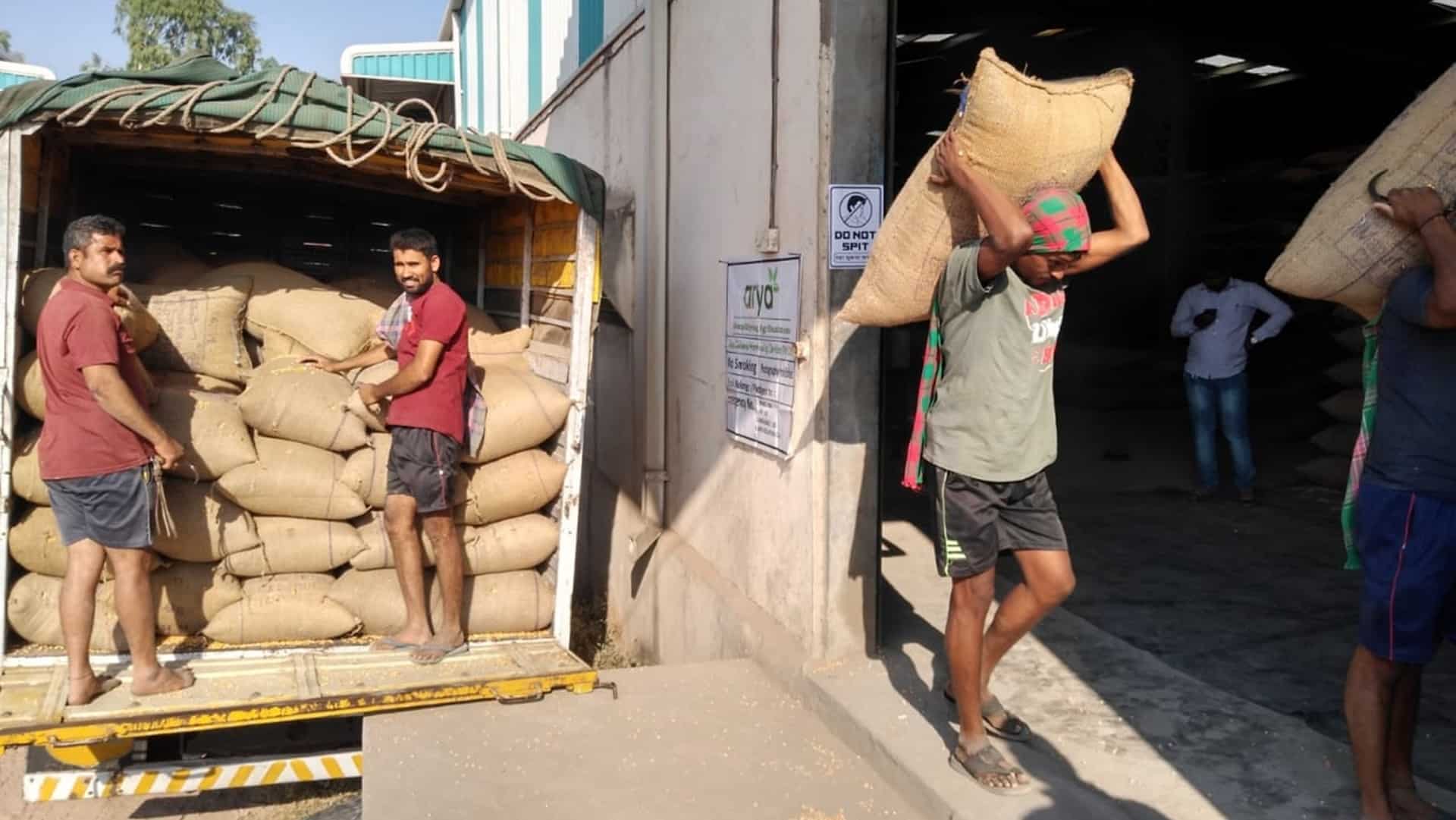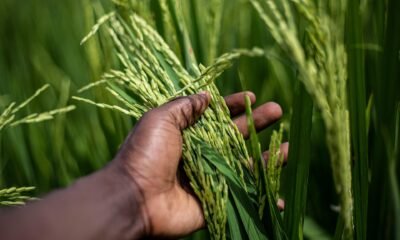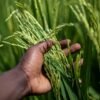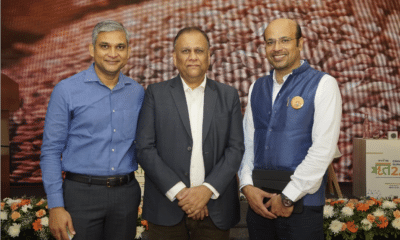Business
How Arya.ag’s post harvest solutions have empowered lakhs of Indian farmers
“Majority of Indian farmers, being small and marginal, do not get the kind of logistical or storage support which their large scale counterparts usually do. As a result, they are often compelled to sell their produce at the time of harvest when prices are lowest, says Anand Chandra, co-founder and executive director of one of India’s largest post-harvest agritech firm Arya.ag.
Founded by Prasanna Rao, Anand Chandra, and Chattanathan Devarajan in 2013, the Noida-based startup provides post-harvest services, helping them store and sell their produce. The platform offers ancillary services for its users including warehouse management, access to finance, quality testing, storage protection services, and connecting produce to buyers. Valued at USD 300 million after raising USD 60 million in Series C funding earlier this year, Arya.ag is currently operating in 21 states across 425 districts.
In an interview with The Plunge Daily, Mr. Anand Chandra delves deeper into various aspects of post harvest services and explains how Arya.ag is empowering lakhs of farmers using its warehouse network and credit solutions.
Q: How Agritech Startups like Arya.ag are maximizing Value creation for farmers by providing post-harvest services-
A: Innovative startups are bridging gaps in the sector with easier financing, cheap & efficient logistics and efficient storage.
The formalisation of the industry in the past years and its digitisation – of spaces, commodities, financing and processes across the value chain has enabled transparency, efficiency and productivity in an otherwise fragmented market. While banks and NBFCs require a formal credit history before lending, new-age Agritech startups are issuing small ticket farm loans to farmers against secured collaterals that are unlocking financing demands in near farmgate markets. The adoption of FinTech at the grassroots has enabled us to tackle agri-finance complexities and enabling financial inclusion of smallholder farmers.
At Arya.ag, we integrate warehouse discovery, financing and market linkages to create an integrated digital platform that is accessible across the value chain from the small hold farmers to large corporates. Leveraging our technology stack, we have been able to optimise our processes to provide users with a seamless experience from storage to commerce with trust, transparency and efficiency. Today we impact over 6.5 Lac farmers and 500 FPOs and ensures a growth of 15-25% in their value realisation. More than 8000 agri enterprises use our platform. Currently, commodities worth about ₹15000 crore flow annually through Arya.ag and we facilitate about 5,500 crore of finance annually to maximize value for both sellers and buyers. Close to 40 percent of our clients are first time borrowers accessing finance from a formal channel, of which close to 10% are women giving them larger access to working capital. Through our platform’s Price Intelligence mechanism and visibility to stocks – loaned and otherwise, we help farmers and FPOs make prompt & informed decisions on commodity sales. These sale proceeds then go to close their loans without impacting her cash-flows.
Q: The pandemic has hastened the tech adoption process in agri-sector. What, according to you, are the key technology trends that will play a key role in 2022 and beyond?
A: Innovation is a strong pillar of modern agriculture. The growth of a cashless economy and financial technology through embedded finance in India is devising new ways to target collateralise credit, increase farm productivity, appropriate pricing, and manage their risks better. Access to quicker and easier loans through Fintechs is increasing farmers’ cash flow. Using a digital platform that can connect a wider audience, a digital marketplace of buyers and sellers has ensured swifter and seamless trading helping farmers find the best price for their crop. Such aggregation has the potential of bringing a high level of efficiency to the sector.
Along with this, the intervention of AI in modern agriculture is going to be a prime disruptor in the coming future. AI/ML will analyse statistical data of farms and will keep getting better at predicting various outcomes. Farm automation-induced smart farming, precision agriculture, blockchain, and artificial intelligence is helping farmers achieve better decision-making and therefore better harvests.
Q: Tech-driven innovations have been at the heart of the startup boom in India. Scores of agritech startups have come up in the last few years which proves there is a lot of untapped potential. What, according to you, can bring India on par with its global peers.
A: The Agri sector has a muddled supply chain that benefits few and deprives a larger section of producers at the mercy of loans to survive. There are several factors at play that need connectivity-fuelled transformation to bring sustainability and resilience to the sector. Mobilising resources from a macro-level perspective in order to improve farm productivity per hectare, is the way ahead. Tech-driven equipment is in line with driving agriculture towards better productivity. Precision farming uses modern technologies like field mapping and satellite imagery in order to improve crop quality.
Also Read: New age-tech changing the face of Indian agriculture: NCML Agcon CEO Nalin Rawal
Overproduction is another hurdle that has plagued the value chain. Emerging agritech companies are making efforts in solving the demand and supply conundrum. Through financial forecasting and aggregation of the stakeholders through digital platforms aims to connect demand and supply, changing the nation’s production-driven supply chain to a demand-driven value chain.
Q: Please tell us about the role of Agritech Startups (especially Arya’s) in rural development.
A: Farmers in India are facing unforeseen challenges throughout the value chain as smallholder farmers, comprising a majority of the farmers in India, do not have access to the type of logistics and storage as the large-scale growers do. Due to this, farmers whose crops do not make it to the market, are compelled to sell at harvest time when the prices are the lowest. Otherwise deprived of proper access to financial services, Arya, leveraging its warehouse network, aids farmers in storing their produce and only selling when they feel the price is right. Arya also manages digital lending based on the produce stored, helping the cash-strapped farmers with opportunities to plan and invest for their next year’s harvest. Along with this, a digital marketplace helps in delivering the next productivity leap.
Along with this, emerging Agritech startups are revolutionizing the sector with tech-enabled quality grading, aggregation, and swift digitally-enabled financing. These initiatives will upgrade decision-making, optimize yields and strengthen economics.

Anand Chandra, Co-founder and Executive Director, Arya.ag
Q: Centre is working on a digital ‘stack’ of agricultural datasets, with its core as land records. It aims to create a unique farmer identity number for each farmer and provide a centralised multi-layer agricultural information system. How can agtech benefit from this ecosystem?
A: It is a step in the right direction. Agristacks will be the creation of a digital ecosystem for an end-to-end solution for farmers. The datasets will definitely be helpful in assessing the requirement for inputs and also be helpful at the time of aggregation of the output. A centralised data of farmers can be leveraged to control overproduction, manage demand and supply and also enable better decision-making thereby revamping the value chain.
Q: Food wastage is a major concern in India. Due to inefficient supply infrastructure, we lose around at least 25-30% of fresh produce. What, according to you, are the biggest infrastructural gaps on the supply side that require the government’s immediate attention?
A: As per our estimates, 15-40% of all food available across the world is either lost or wasted. India is a surplus producer of various agri commodities and cold storage is a key player in the post-harvest stage. Perishable agriculture products require a cold chain supply soon after the harvest. Immediate intervention is needed in establishing robust cold chain supplies in order to minimize or avoid post-harvest losses in terms of quality or value.
Similarly concentrated efforts are needed in addressing the warehouses issue across India. At Arya, we have observed how giving farmers an opportunity to wait for favourable market conditions by storing their produce, completely changes their financial dynamics for the good. Also, there is a need to encourage emerging technologies in the agri space in order to build a robust system that effectively integrates farmers into formal value chains.
Q: As much as 67 percent of India’s farmland is held by the marginal farmers with holdings below one hectare. Average daily income of a farmer from cultivation in 2018-19 was Rs 27 per day, according to the latest Situation Assessment Survey (SAS). This means the cost of availing modern tech is beyond their reach. How can technology support them who are most at risk of being left behind?
A: It is an unsaid rule that technology can be widely adopted only if it is affordable and solves issues at a macro level. Disruptive solutions like smart sensors that collect data on soil and crop growth are believed to increase farm productivity, however, they come with a hefty price tag. Tech companies need to price the product considering the volume available. As these tech innovations become affordable, they will automatically reach a wider audience.
Q: Experts call agtech as humanity’s best bet for a sustainable agrarian economy. Your views? Does Arya.ag also share a vision for sustainability in Indian agriculture?
A: Absolutely. We have identified major pain points faced by farmers in the entire supply chain. Through our near-farm footprint, technology solutions, tech-enabled processes and capacity-building initiatives, we work on many of these gaps throughout the value-chain. Our presence at the farm gate allows for aggregation of the crop closest to where it is produced, curtailing transportation losses drastically. We have innovated on storage technology by bringing on-demand, ready-to-install, IoT enabled hermetic storage right at the farmers’ doorstep. Apart from versatility and mobility, the structure provides for commodity quality upkeep without any chemical intervention. Hence, it is the only available technology to store organically labelled produce in world.
Also Read: This HR tech startup is helping Cos bridge the employee engagement gap
We partner with farming communities and other value chain participants to enhance their capacities locally to facilitate better management of their crop output right at the farm. Our tech-enabled processes allow for consistent quality checks and precision-led commodity management to ensure negligible food loss. Our AI-enabled computer vision solutions eliminate pilferage, theft or any other security lapse at our warehouses. And finally, our technology platform allows for nation-wide transparency by providing access and visibility to all grains traversing our network.
We therefore bring together innovative technology and new processes to rapidly adapt, and build resilience, to a fast-changing climate.
Q: In how many states Arya. ag are operating at present and do share with us, your roadmap for the future ?
A: Currently, we have a network of 10,000 + warehouses across 21 states and commodities worth about Rs 15,000 crore flow through Arya,ag. We expect our trading volume of Rs 1,500 crore to go up to about Rs 7,500 crore in the next 12 months. We are also expanding our reach from about 55 percent of India’s districts to about 75 percent of the districts in the next 12 months.
For Arya, any entity working in the grain ecosystem – be it farmers, farmer producer organizations (FPOs), financial institutions, SME Agri processors, commodity traders, Agritech and Agrifintech players, and corporate agribusinesses, they work through us. They partner with us for various services and find value in working us as we enable and facilitate grain commerce across the country. We are therefore working towards becoming the Grain OS of the country.
10. Agri-tech innovations do provide alluring prospects but the promoters and investors are looking at rural backyards of metros and Tier-2 cities. Please tell us about the kind of impact agritech revolution has made on low farm income zones, i.e. central, eastern and north-eastern India.-
The agricultural value chain, especially in these regions, is complicated. There is a strong need to adopt modern technologies and follow sustainable farming practices to ensure a steady flow of income for farmers. Despite such barriers, we have seen encouraging results in Jharkhand and Bihar, however, North East region still remains a yet-to-be-explored. We will initiate our tech-driven solutions in NE soon with a well-planned roadmap that addresses actual bottlenecks that those areas face.










































